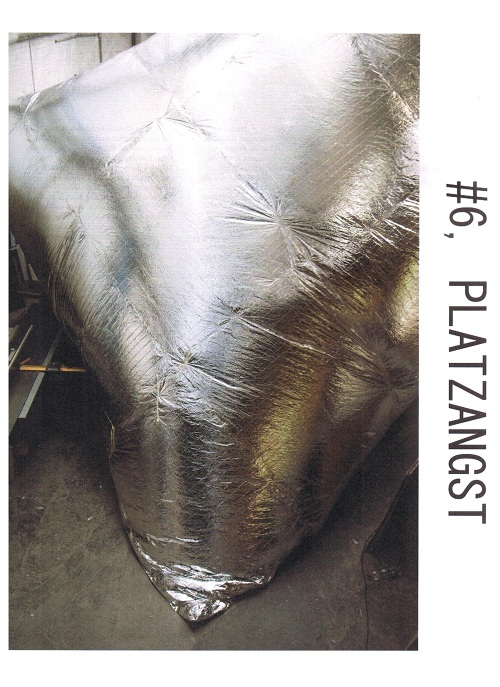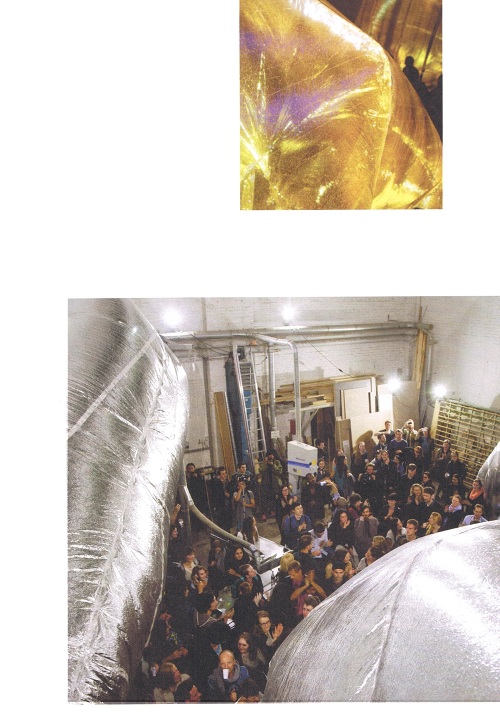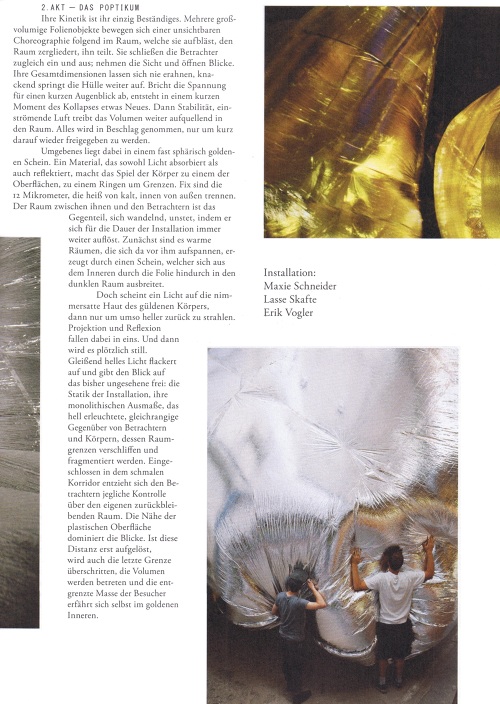PLATZANGST

Szenenbilder: Zwischen den Disziplinen Architektur, Tanz, Theater, Musik, Klangkunst und Film entstehen Rauminszenierungen, Szenen der Platzangst. Ein künstlerisches Experiment in der Interaktion von statischem und bewegtem Raum, sowie dessen Wahrnehmung. Produktion von Rauminstallationen von Studierenden der Universität der Künste Berlin.
An installation created for the release of the Protocol magazine #6. The Venue is dealing with the german term 'Platzangst' (angst of space) which covers both agoraphobia and claustrophobia. The installation consists of three volumes of foil which are inflated to a choreography of flash lights.
Project for Szenenbilder, Udk Berlin 2014
Maxie Schneider, Lasse Skafte, Erik Vogler
Learn more about the Protocol here.
An installation created for the release of the Protocol magazine #6. The Venue is dealing with the german term 'Platzangst' (angst of space) which covers both agoraphobia and claustrophobia. The installation consists of three volumes of foil which are inflated to a choreography of flash lights.
Project for Szenenbilder, Udk Berlin 2014
Maxie Schneider, Lasse Skafte, Erik Vogler
Learn more about the Protocol here.
for popticum installation skip to min 06:00
MANIFESTO
Kinetic is the only constant. Voluminous objects of foil transform in space following an invisible choreography; inflating, dissecting, segregating the space. Simultaneously shutting the spectator in and out: They block the view and create new visions. Never allowing you to grasp their overall dimension, the membrane crackingly unfolds. Losing the toughness for a brief second, something new is created in the moment of collapse. Then stability. Inflowing air drives the volumes swellingly into the room. Space is seized only to be released again.
The surrounding is left in a nearly ethereal golden glow. A material that both transmits and reflects light transforms the play of the bodies into a play of surfaces, a battle of boundaries. It is that 12 micrometres thin layer that separates hot and cold, the inside from the outside. The space between them and the spectator is the opposite, changing, restlessly dissolving for the duration of the installation.
First, they are hollow spaces unfolding in front of the spectator's eye, articulated by the glow emitted through the foil into the dark room. However, as light shines onto the insatiable skin of the golden body it is reflected back even brighter. Projection and reflection become one. Suddenly everything is quiet. Blindingly bright light flashes on and offers a view of the previously unseen: the static of the installation, its monolithic dimensions, the brightly lit counterpart opposite of the observer. Enclosed in the passage the viewer eludes any control over his own remaining space. The proximity of the plastic surface dominates the view. When this distance is overcome the last limit is exceeded, the volumes are entered and the emancipated mass of spectators discovers itself in the golden heart.












